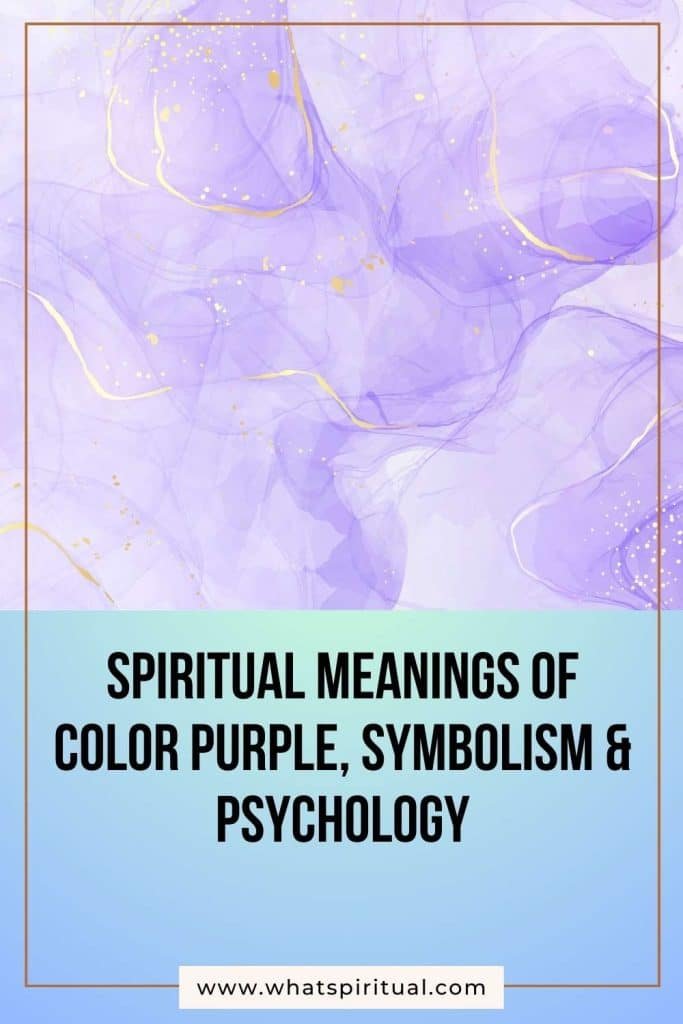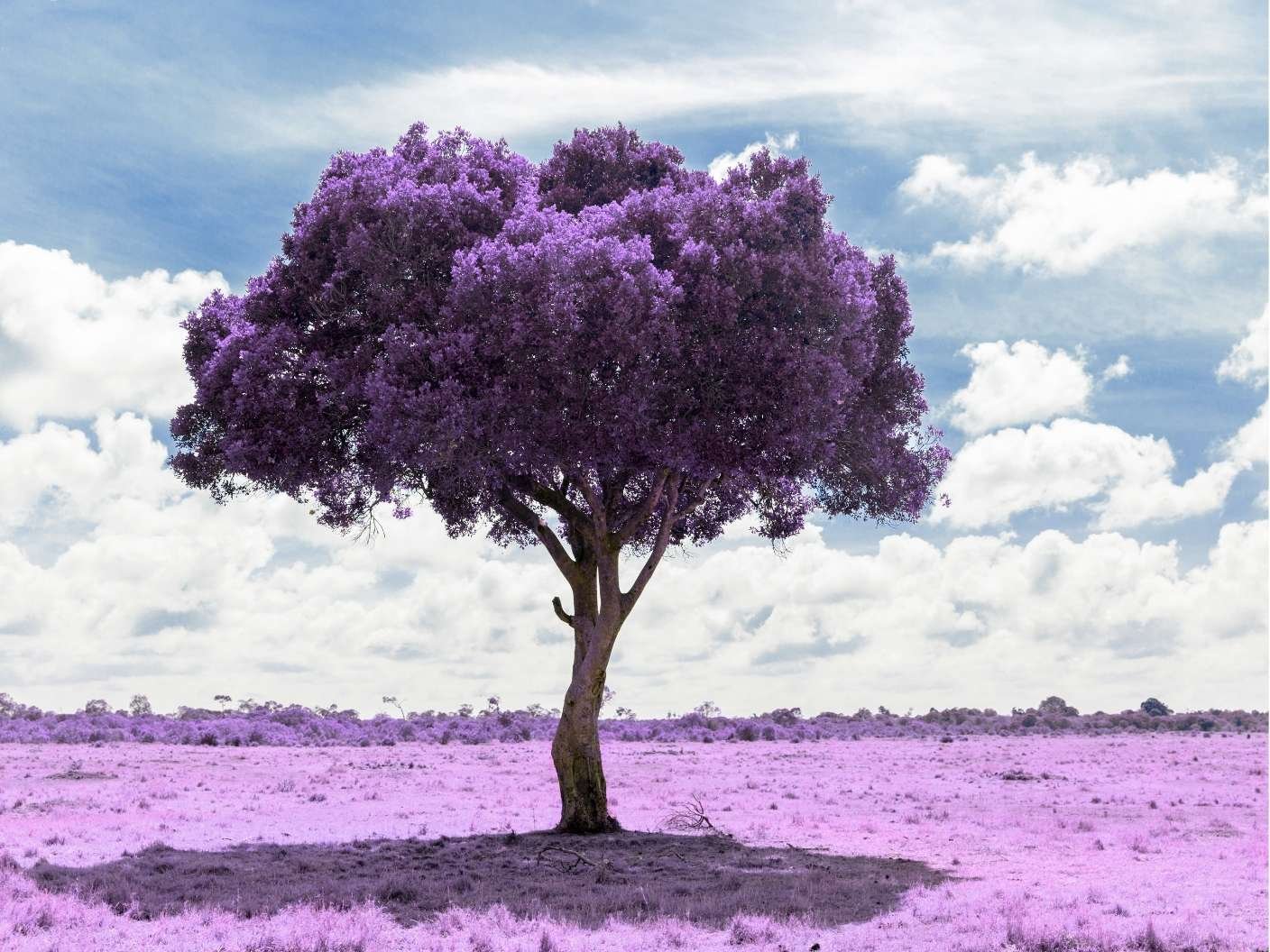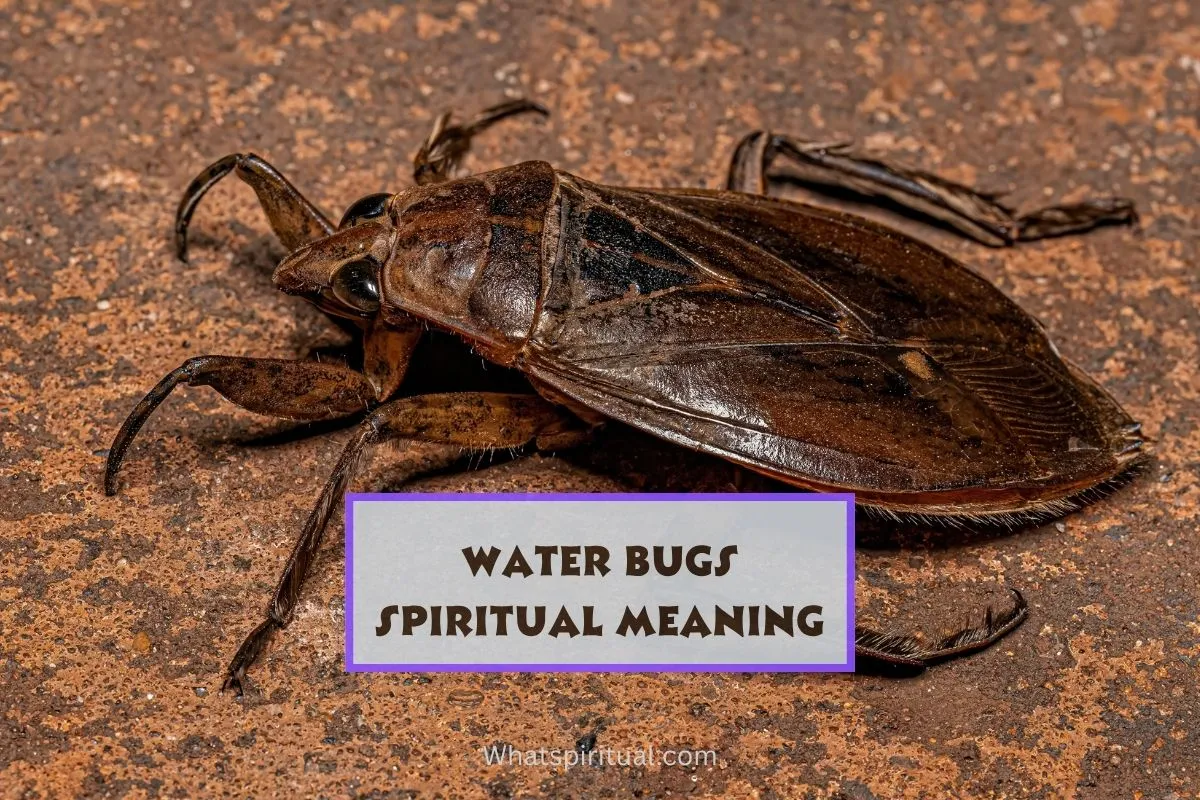The color purple is a rich, vibrant hue steeped in symbolism and spiritual meaning. Throughout history, the purple color has been associated with royalty, luxury, and wisdom.
In many cultures and religions, purple carries powerful symbolic significance related to spirituality, creativity, and the sacred feminine energy. The psychology behind the color purple reveals its calming yet uplifting effects on the mind and emotions.
Understanding the spiritual meanings of the color purple can provide valuable insights into personal growth, intuition, and higher consciousness.
Explore the deeper symbolism and purple color meanings to tap into your spiritual side.

Read Next: 10 Spiritual Meanings of Purple Sky & Symbolism
Key Takeaways
Purple Color in Visible Spectrum
The color purple holds a unique position in the visible spectrum. It is not a color of the rainbow; instead, it sits at the end of the visible light spectrum, where the short wavelength of blue meets the long wavelength of red.
This positioning alone gives purple a sense of mystique, as it blends the calm stability of blue with the fierce energy of red to create something entirely different.
In the world of physics, the color purple is actually a result of our brain’s interpretation when it detects a mix of red and blue wavelengths, without the presence of green.
This phenomenon makes purple somewhat of an enigma, a color that exists more in our perception than in the physical realm of light wavelengths.
It’s a reminder of the complex and marvelous ways in which our eyes and brain work together to perceive color.
Understanding purple’s place in the visible spectrum sets the stage for delving deeper into its psychological and spiritual implications.
It’s a color that defies simple categorization, hovering between the warmth of reds and the coolness of blues, inviting us to explore its meanings and influences on our minds and spirits.
Purple Color Psychology
The psychology of the color purple is as rich and complex as the color itself. It’s commonly associated with royalty, nobility, luxury, and power, thanks to its historical use by kings, queens, and other high-ranking officials.
This association stems from the rarity and cost of purple dye in ancient times, which was extremely difficult and expensive to produce.
On a psychological level, purple is thought to stimulate the imagination and inspire high ideals. It’s a color that encourages contemplation and meditation, helping to calm the mind and nerves. This tranquil quality makes it an excellent choice for spaces designed for reflection and spiritual practice.
Moreover, purple is often connected with creativity and eccentricity, suggesting a personality that is unafraid to stand out from the crowd. It’s a color for those who think outside the box, challenging conventional norms with their innovative and visionary ideas.
This aspect of purple’s psychology speaks to its ability to inspire us to reach beyond our limitations, urging us to explore the unknown.
Psychological or Metaphysical Explanation of Color Purple
Delving into the metaphysical explanation of the color purple reveals its significance in balancing the mind, body, and spirit. It is believed that this color can influence the energy within and around us, promoting harmony and enhancing spiritual awareness.
The presence of purple in one’s surroundings or attire is said to raise one’s psychic sensitivity, intuition, and spiritual connection.
From a psychological standpoint, purple’s blend of red’s passion and blue’s tranquility creates a perfect equilibrium, fostering a state of wellbeing.
It is in this balance that the mind finds clarity and the spirit discovers peace, making purple a powerful color for those seeking to deepen their spiritual path.
The metaphysical qualities of purple also include its ability to transform negativity into positive energy. It’s a color that encourages emotional release and spiritual growth, helping individuals to overcome fears and obstacles on their journey towards enlightenment.
This transformative power of purple beautifully illustrates its role as a bridge between the material and spiritual worlds.
Spiritual Meanings of Color Purple
1) Divine Connection
The color purple holds a profound significance in the spiritual realm, serving as a gateway to the divine. Its rich hue resonates with the frequencies of higher consciousness, allowing individuals to establish a deeper understanding and connection with the universe.
This connection transcends the physical realm, facilitating a harmonious union between the human spirit and the cosmic forces that govern existence.
Through this bond, one can access profound wisdom and insights, leading to a heightened sense of purpose and inner peace.
The divine connection symbolized by purple encourages spiritual growth and personal evolution, guiding individuals towards enlightenment and self-realization.
2) Intuition and Psychic Abilities
Purple is believed to enhance spiritual intuition and psychic sensitivity, acting as a conduit for tapping into one’s inner wisdom. This color stimulates the third eye chakra, the energy center associated with intuition, clairvoyance, and extrasensory perception.
By aligning with the vibrations of purple, individuals can heighten their awareness and receptivity to subtle energies and messages from the spiritual realm.
This heightened sensitivity can manifest in various forms, such as premonitions, heightened awareness of auras, or the ability to interpret symbolic messages from the universe.
Embracing the power of purple can unlock the doorway to a deeper understanding of oneself and the world around us.
3) Transformation
Purple is a symbolic representation of spiritual growth and transformation, guiding individuals through the profound process of personal and spiritual development. This color is associated with the journey of self-discovery, encouraging individuals to shed limiting beliefs, patterns, and habits that no longer serve their highest purpose.
The transformative power of purple inspires individuals to embrace change, fostering a willingness to let go of the past and embrace new perspectives and ways of being.
Through this transformative process, individuals can align themselves with their authentic selves, cultivating a deeper sense of purpose and fulfillment.
4) Protection
Historically, purple has been utilized in protective amulets and rituals, believed to ward off negative energies and provide a shield against psychic attacks. Its powerful vibrations create a protective cocoon around the individual, shielding them from harmful influences and external forces that could disrupt their spiritual journey.
This protective quality of purple promotes a sense of safety and security, allowing individuals to explore their spiritual paths without fear or inhibition.
By surrounding oneself with the energy of purple, one can find solace in the knowledge that they are guarded against external threats, fostering a profound sense of inner peace and tranquility.
5) Healing
The color purple possesses a remarkable ability to promote healing of the mind and spirit, aiding in the recovery from emotional wounds and traumas. Its calming effects soothe the soul, allowing individuals to release pent-up emotions and negative thought patterns that may have been holding them back.
Purple encourages introspection and self-reflection, enabling individuals to confront and process their emotional baggage in a healthy manner.
By aligning with the healing vibrations of this color, individuals can experience a profound sense of inner peace and emotional balance, facilitating the mending of past hurts and the cultivation of self-love and self-acceptance.
6) Wealth and Prosperity
While historically associated with royalty, the color purple continues to attract abundance and manifest wealth in a spiritual sense. Its regal hue resonates with the vibrations of prosperity, encouraging individuals to cultivate an abundance mindset and attract positive energies that support their material and spiritual growth.
By aligning with the frequency of purple, individuals can unlock their full potential, fostering a deep sense of self-worth and confidence in their abilities to achieve their desires and aspirations.
This color inspires individuals to embrace their inner power and take purposeful action towards creating a life of fulfillment and prosperity.
7) Meditation and Contemplation
Purple serves as a powerful ally in the practice of deep meditation and contemplation, enhancing spiritual insights and enlightenment.
Its calming and grounding vibrations create a conducive environment for quieting the mind and achieving a state of stillness.
By immersing oneself in the energy of purple, individuals can access a deeper level of awareness and clarity, allowing them to explore the depths of their consciousness and connect with their higher selves.
This color supports the cultivation of mindfulness, promoting a heightened sense of presence and attunement to the present moment.
8) Creativity
The color purple possesses a unique ability to stimulate creativity and imagination, encouraging the expression of one’s deepest thoughts and feelings. Its rich hues inspire individuals to tap into their inner muse, unleashing a torrent of innovative ideas and artistic expression.
Purple supports the free flow of creative energy, allowing individuals to think outside the box and approach challenges from a fresh and unconventional perspective.
By aligning with the vibrations of this color, artists, writers, musicians, and visionaries can unlock their full creative potential, giving birth to truly remarkable and transformative works.
9) Nobility of Spirit
Reflecting its royal associations, the color purple represents nobility of spirit, encouraging dignity, pride, and compassion in interpersonal relationships.
Its regal hue inspires individuals to carry themselves with grace and integrity, fostering a sense of self-respect and respect for others.
Purple promotes the cultivation of virtues such as humility, empathy, and selflessness, reminding individuals of the importance of treating others with kindness and consideration.
By embodying the energy of purple, individuals can elevate their consciousness and contribute to creating a more harmonious and interconnected world.
10) Mystery and Magic
Lastly, purple embodies the mystery and magic of the spiritual realm, reminding individuals of the unseen forces that shape their lives. Its enigmatic hue represents the divine mysteries that lie beyond the veil of the physical world, inviting individuals to explore the depths of the unknown and embrace the wonders of the universe.
Purple encourages individuals to remain open-minded and curious, seeking out the extraordinary and embracing the magical aspects of existence.
By attuning to the energy of this color, individuals can tap into the boundless potential of the universe and manifest their deepest desires and aspirations.
Color Purple Spiritual Meanings in Different Cultures
In various cultures and religions around the world, the color purple holds significant spiritual meanings.
In Buddhism, purple is a color of mysticism and the transformation of the soul, representing the penultimate stage of enlightenment.
In Christianity, it symbolizes the sovereignty of Christ, often used during Lent and Advent to denote a period of penance, reflection, and preparation.
In Hinduism, purple is associated with the crown chakra, the highest chakra that connects us with the divine. This ties back to the idea of purple being a color of divine connection and spiritual awareness.
Similarly, in ancient Egypt, purple was considered a color of virtue and faith, used to decorate the garments of the high priests.
The diversity in purple’s spiritual meanings across cultures and religions underscores its universal significance as a color of wisdom, dignity, and spiritual elevation.
It’s a testament to purple’s ability to transcend cultural and religious boundaries, touching the human spirit in profound and meaningful ways.
Usage of the Color Purple in the History
Historically, the color purple was a symbol of power, wealth, and luxury. The Phoenicians, trading from the city of Tyre, were famed for their Tyrian purple dye, made from the murex shellfish. This dye was so costly to produce that it became the preserve of royalty and the very wealthy.
In Rome, laws were even enacted to restrict the wearing of purple to the emperor and his imperial family.
During the Byzantine Empire, emperors wore robes dyed in purple to signify their authority and divine right to rule. This tradition carried through to the Renaissance, where purple continued to be associated with royalty and high status.
The rarity of purple in nature, combined with the expense involved in its production, maintained its status as a color of prestige and power through the ages.
The democratization of purple came with the synthesis of the first aniline dye by William Henry Perkin in 1856. Suddenly, what was once exclusive became accessible, allowing purple to permeate the fabric of society in more ways than one.
Despite this shift, the historical associations of purple with nobility and exclusivity have endured, continuing to influence its perception and use today.
Spiritual Meaning of Purple Shades
The various shades of purple carry their own unique spiritual meanings. Lavender, with its delicate and soft presence, brings a sense of calm and tranquility, promoting peace of mind and relaxation. It’s often associated with femininity, grace, and elegance.
Deep purple, or eggplant, exudes a sense of luxury and grandeur, intensifying the spiritual vibrations associated with purple. It’s a color of deep contemplation, spiritual insight, and enlightenment.
This shade of purple stimulates the subconscious, unlocking mysteries and deepening one’s understanding of the self and the universe.
Amethyst, a light, vibrant shade, combines the calming aspects of lavender with the spiritual intensity of deep purple. It is particularly connected to the crown chakra, enhancing spiritual awareness and psychic abilities.
Amethyst encourages healing and purification, aiding in the transformation of negative energy into love and protecting against harmful thoughts and intentions.
Each shade of purple offers a unique lens through which to explore the spiritual realm, providing a rich tapestry of meanings and influences that cater to different aspects of our spiritual journey.
Biblical Meanings of The Color Purple
In the Bible, the color purple holds significant symbolism, often associated with royalty, wealth, and authority. Exodus 25:4 mentions purple among the materials used for the construction and decoration of the Tabernacle, symbolizing the wealth and beauty of God’s dwelling place. In Judges 8:26, purple garments worn by kings of Midian denote their royal status and wealth.
The use of purple in the New Testament is equally symbolic. In Mark 15:17, Jesus is clothed in a purple robe by the Roman soldiers, mocking his claim to kingship. This act, while intended as ridicule, unknowingly affirms the divine royalty and authority of Christ.
The biblical references to purple not only highlight its earthly associations with royalty and wealth but also its spiritual significance in denoting the sovereignty and majesty of Jesus Christ. Purple, therefore, serves as a powerful symbol of both the human and divine aspects of Christ’s identity.
Color Purple as the Seventh Chakra or Crown Chakra Color
In the realm of spiritual practice, the color purple is intimately connected with the seventh chakra, also known as the crown chakra.
Located at the top of the head, the crown chakra is the gateway to higher states of consciousness, serving as the bridge between the individual and the universe.
The crown chakra, represented by the color purple, is associated with spiritual enlightenment, cosmic consciousness, and the limitless peace of unity with all that is.
When this chakra is open and balanced, it facilitates a deep connection to one’s spirituality, fostering a sense of inner wisdom, self-awareness, and enlightenment.
Engaging with the color purple through meditation, visualization, or the presence of purple objects in one’s environment can help to stimulate and balance the crown chakra.
This, in turn, encourages spiritual growth, enhancing one’s connection to the divine and fostering a deeper understanding of the interconnectedness of all life.
Seeing Purple in a Dream Spiritual Meaning
Encountering the color purple in a dream can carry profound spiritual significance. Often, it is a message from the subconscious or the divine, urging the dreamer to pay attention to their spiritual path.
Purple in dreams may symbolize a period of transformation and growth, indicating that the dreamer is or should be undergoing a process of spiritual awakening.
Alternatively, dreaming of purple could be a sign to deepen one’s spiritual practice, perhaps by incorporating more meditation, prayer, or reflection into daily life.
It may also represent intuition and psychic abilities, suggesting that the dreamer should trust their instincts and be more open to receiving guidance from the spiritual realm.
Interpreting the presence of purple in dreams requires introspection and mindfulness. By reflecting on the context in which purple appears and the feelings it evokes, one can gain insight into the spiritual messages being conveyed and how best to act upon them.
Purple Gemstones and Their Meanings
Purple gemstones are not only visually stunning but also carry deep spiritual meanings and healing properties.
Amethyst, perhaps the most well-known purple gemstone, is highly regarded for its powerful protective qualities. It is believed to purify the mind, clearing it of negative thoughts and fostering spiritual wisdom.
Charoite is another purple gemstone, known for its ability to stimulate inner vision and spiritual insight. It encourages acceptance and trust, aiding in the overcoming of fear and resistance on the path to spiritual growth.
Sugilite, with its vibrant purple hue, is considered a healer’s stone, promoting physical, emotional, and spiritual healing. It embodies the energy of the crown chakra, enhancing spiritual awareness and psychic abilities.
Each purple gemstone offers unique spiritual benefits, providing tools for healing, protection, and growth on one’s spiritual journey.
Final Words
The color purple, with its rich symbolism and deep spiritual meanings, serves as a profound reminder of the interconnectedness of the physical and spiritual realms.
Whether encountered in nature, in dreams, through the presence of gemstones, or as a symbol in various cultural and religious contexts, purple invites us to explore the depths of our spirituality and the mysteries of the universe.
As we integrate the lessons and energies of the color purple into our lives, we open ourselves to greater wisdom, creativity, and spiritual enlightenment.
Let us embrace the journey, allowing the transformative power of purple to guide us towards our highest selves.
In the realm of spirituality and personal growth, exploring the meanings and influences of colors can provide valuable insights and inspiration.
May the journey into the spiritual significance of purple and other colors enrich your path and illuminate your way forward.
Infographic: The Spiritual Meanings of Color Purple
You Might Also Like
1) 10 Spiritual Meanings of Purple Sky & Symbolism
2) 10 Spiritual Meanings of Color Yellow, Symbolism & Psychology
3) 10 Spiritual Meanings of Color Pink, Symbolism & Representation
4) 10 Spiritual Meanings of Color White, Symbolism & Psychology




















